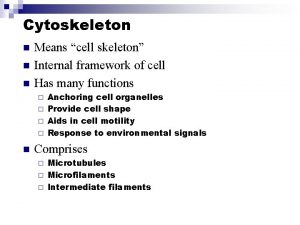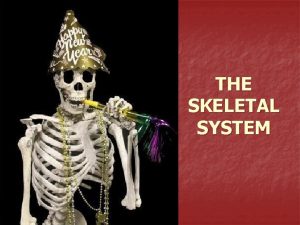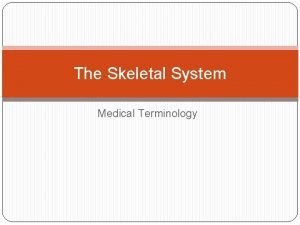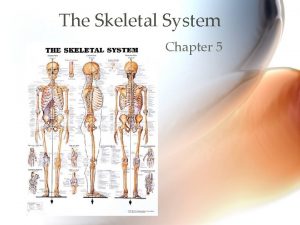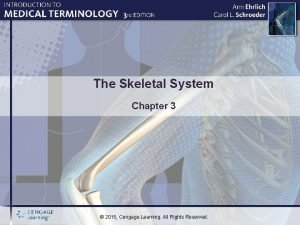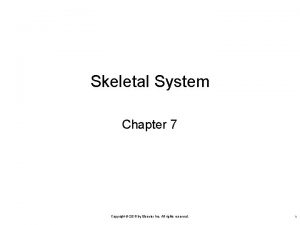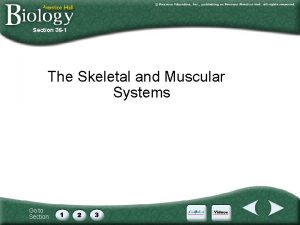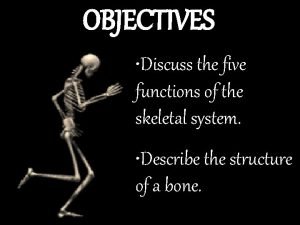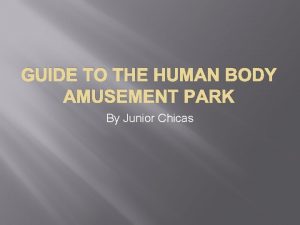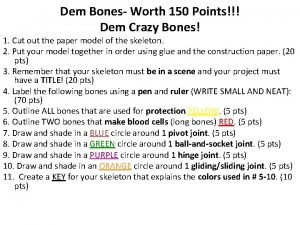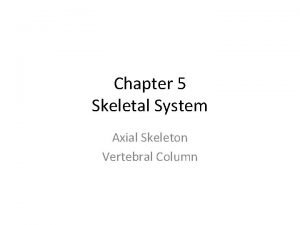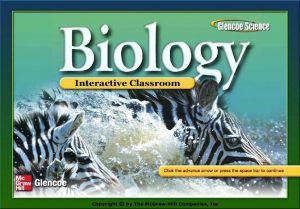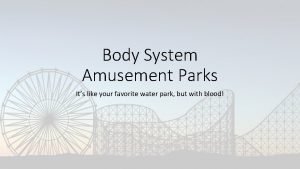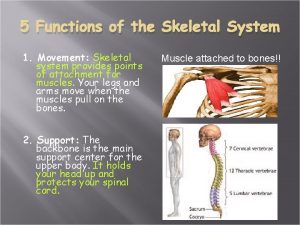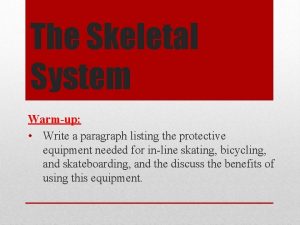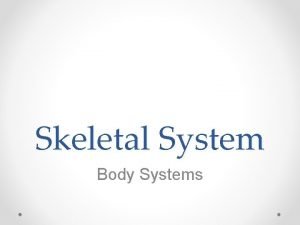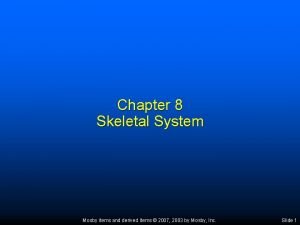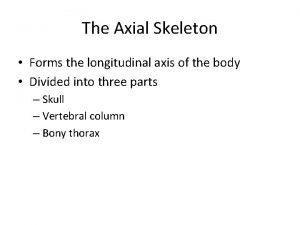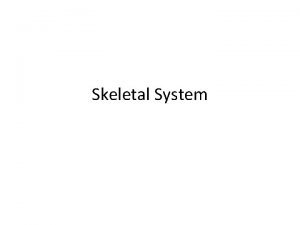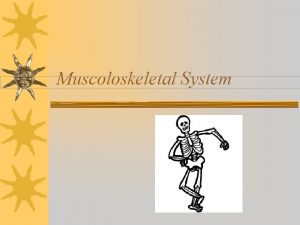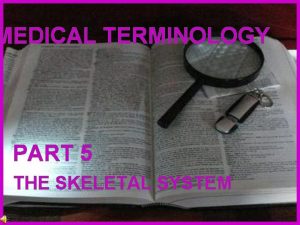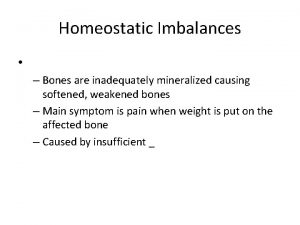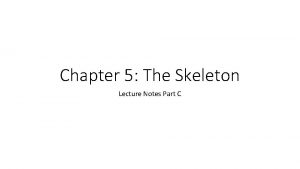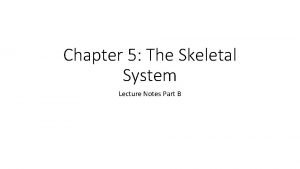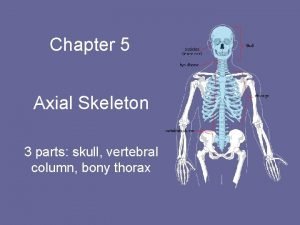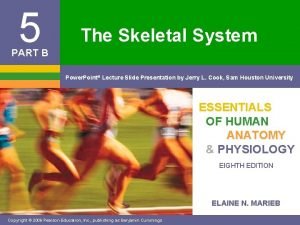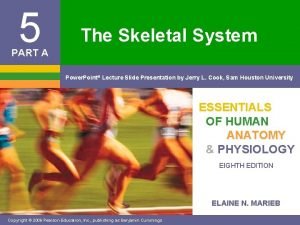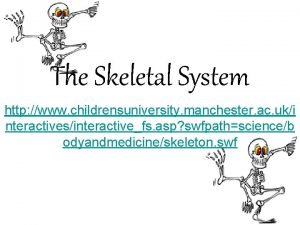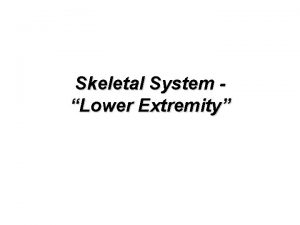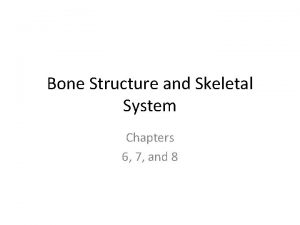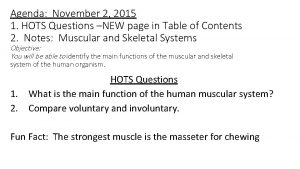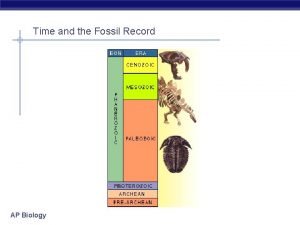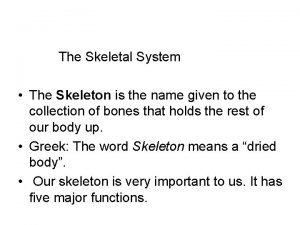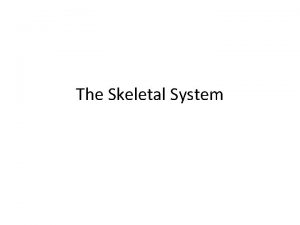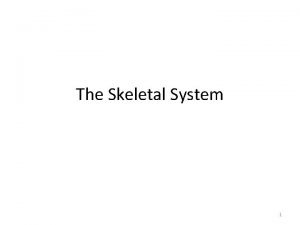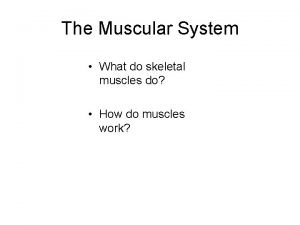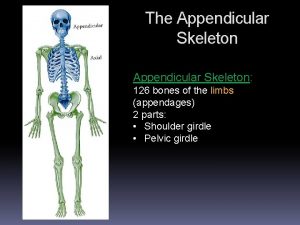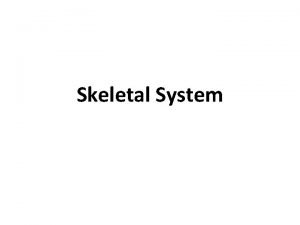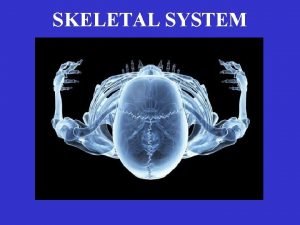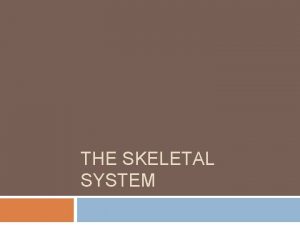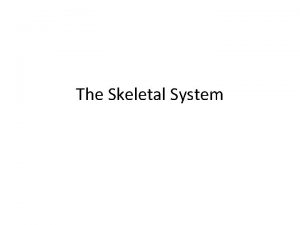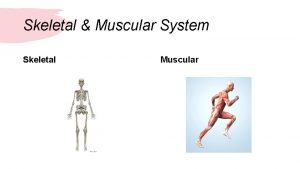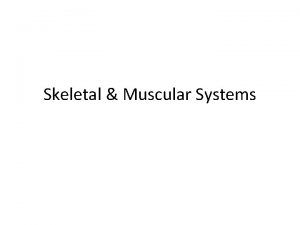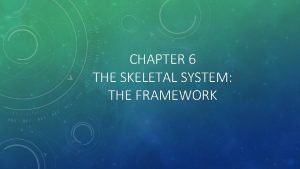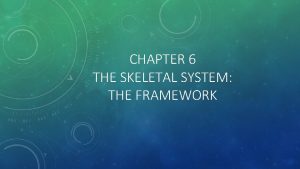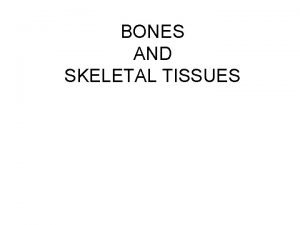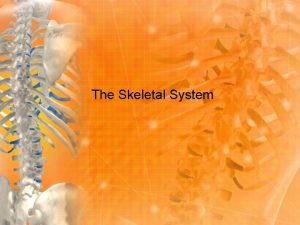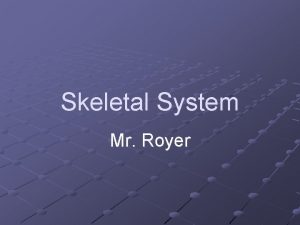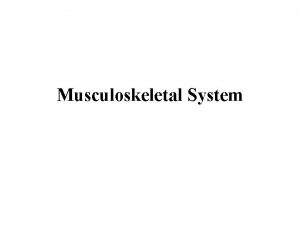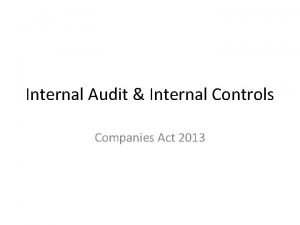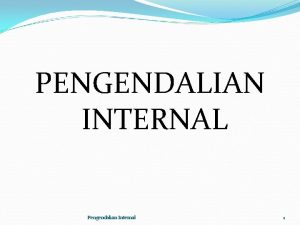Skeletal System 25 Skeletal system internal framework of






























































- Slides: 62

Skeletal System

25. Skeletal system – internal framework of the body A. Includes – bones, cartilage, joints

Function a. support

Function b. protection

Function c. movement

Function d. Mineral storage

Function e. Blood cell formation

C. Bone classification – based on shape

a. Long bones – longer than they are wide • Examples – arm and leg bones, phalanges

b. Short bones – roughly cube shaped • Examples – wrist and ankle bones, patella

c. Flat bones – thin, flattened, usually a bit curved • Examples – sternum, scapulae, ribs, skull

d. Irregular bones – complicated shapes • Examples – vertebrae, hip bones

Long Bone Structure

a. Periostium – nutrient rich membrane surrounding the bone

Periostium • Allows good attachment of tendons and ligaments

Periostium • Contains osteoblasts and osteoclasts

Periostium • Causes width growth

b. Epiphyses – enlarged ends of the bone

Epiphyses • Lined with compact bone and filled with spongy bone

Epiphyses • Ends covered with cartilage for cushion

Epiphyses • Red marrow - blood producing tissue found in spongy bone

Bone Marrow Donation

c. Epiphyseal plate – point where epiphysis and diaphysis meet

Epiphyseal plate • Disk of cartilage where growth occurs during childhood

Epiphyseal plate • Direction of growth is toward the shaft Your growth in height is likely to stop by the time you are 16 if you're a girl and 18 if you're a boy

d. Diaphysis – tubular shaft

Diaphysis • Lined with thick collar of compact bone

Diaphysis • Medullary cavity – hole in the center that contains yellow bone marrow (fat for energy storage)

Surface Features a. Projections b. Depressions c. Openings

Projections a. For attachments

Depressions b. For joints to fit together

Openings c. For blood vessels and nerves

Osseous Tissue

a. Osteon – a group of round tubes

b. Central canal – contain blood vessels and nerve fibers

c. Lamellae – each ring

d. Lacuna – cavities between each lamellae, contain osteocytes

Lacuna

e. Osteocytes – mature bone cells

Two other types of osteocytes • Osteoblasts – build bone • Osteoclasts – consume or destroy bone

Bone Formation

Fetal skeletons • Fetal skeletons are made of cartilage. By the time they are born, much of the cartilage has been replaced with bone. • Cartilage continues to be replaced until a person is about 25 years old.

Bone remodeling G. Osteoclasts circulate throughout the bone and look for old or damaged tissue to break down, which are then replaced by osteoblasts which lay down new bone tissue.

Issues with Bones

Breaks or fractures a. Greenstick – doesn’t completely break through the bone (incomplete) • Common in young children

Breaks or fractures b. Spiral – diagonal break from twisting force • Common sports fracture

Breaks or fractures c. Comminuted – fragments into 3 or more pieces • Common in elderly - brittle bones

Breaks or fractures d. Transverse – cuts straight across the axis of the bone

Breaks or fractures e. Compound – breaks through the skin

Breaks or fractures f. Compression – bone is crushed

What type of fracture?

What type of fracture?

What type of fracture?

What type of fracture?

What type of fracture?

What type of fracture?

Fracture Repair

Step 1 a. A hematoma forms over the fracture site

Step 2 b. Fibro cartilaginous callus formation

Step 3 c. Bony callus formation

Step 4 d. Bone remodeling

Osteoporosis C. Deterioration of the bones – bones absorption outpaces bone deposit
 Explain the concept of internal control
Explain the concept of internal control Audit report of a company
Audit report of a company 2013 coso framework
2013 coso framework Cytoplasmic streaming
Cytoplasmic streaming Internal logical framework
Internal logical framework Dispositional framework vs regulatory framework
Dispositional framework vs regulatory framework Conceptual framework definition
Conceptual framework definition Franmework
Franmework Theoretical framework
Theoretical framework Dispositional framework vs regulatory framework
Dispositional framework vs regulatory framework Theoretical framework
Theoretical framework 5 main functions of the skeleton
5 main functions of the skeleton Medical terminology skeletal system
Medical terminology skeletal system Skeletal system
Skeletal system Chapter 3 the skeletal system learning exercises answer key
Chapter 3 the skeletal system learning exercises answer key Chapter 7 skeletal system
Chapter 7 skeletal system Chapter 5 the skeletal system figure 5-13
Chapter 5 the skeletal system figure 5-13 Section 36-1 the skeletal system
Section 36-1 the skeletal system Five functions of the skeletal system
Five functions of the skeletal system Skeletal system amusement park
Skeletal system amusement park Dem crazy bones project
Dem crazy bones project Chapter 6 the skeletal system answer key
Chapter 6 the skeletal system answer key Chapter 5 the skeletal system vertebral column
Chapter 5 the skeletal system vertebral column Chapter 32 section 2 the skeletal system answer key
Chapter 32 section 2 the skeletal system answer key Body system amusement park names
Body system amusement park names Skeletal system 5 functions
Skeletal system 5 functions Navigating the body regions of the body
Navigating the body regions of the body Skeletal system paragraph
Skeletal system paragraph What are the five functions of the skeletal system
What are the five functions of the skeletal system Whats the main function of the skeletal system
Whats the main function of the skeletal system Chapter 8 skeletal system
Chapter 8 skeletal system Chapter 7 4 skeletal system
Chapter 7 4 skeletal system Chapter 5 skeletal system figure 5-13
Chapter 5 skeletal system figure 5-13 Skeleton
Skeleton Figure 5-13 is a diagram of the articulated skeleton
Figure 5-13 is a diagram of the articulated skeleton Skeletal system bell ringer
Skeletal system bell ringer Axial vs appendicular skeleton
Axial vs appendicular skeleton Muscoloskeletal system
Muscoloskeletal system Constructed versus nonconstructed terms
Constructed versus nonconstructed terms Homeostatic imbalances of the skeletal system
Homeostatic imbalances of the skeletal system Typical vertebra superior view
Typical vertebra superior view Hyoid bone lecture
Hyoid bone lecture Chapter 5 the skeletal system
Chapter 5 the skeletal system Receive
Receive Chapter 3 the skeletal system labeling exercises
Chapter 3 the skeletal system labeling exercises Hollow portions of bones surrounding the nasal cavity
Hollow portions of bones surrounding the nasal cavity Chapter 5 the skeletal system figure 5-10
Chapter 5 the skeletal system figure 5-10 Skeletal system
Skeletal system Lower extremity appendicular skeleton
Lower extremity appendicular skeleton Skeletal system
Skeletal system Autonomic nervous system pathway
Autonomic nervous system pathway Chapter 8 skeletal system
Chapter 8 skeletal system Learning objectives of skeletal system
Learning objectives of skeletal system Where is the long bone located
Where is the long bone located Hots questions on skeletal system
Hots questions on skeletal system Skeletal system
Skeletal system Skeletal system
Skeletal system Skeletal system
Skeletal system Introduction of skeletal system
Introduction of skeletal system Bone formation
Bone formation Skeletal and muscular system
Skeletal and muscular system Appendicular region
Appendicular region Parts of a long bone
Parts of a long bone



